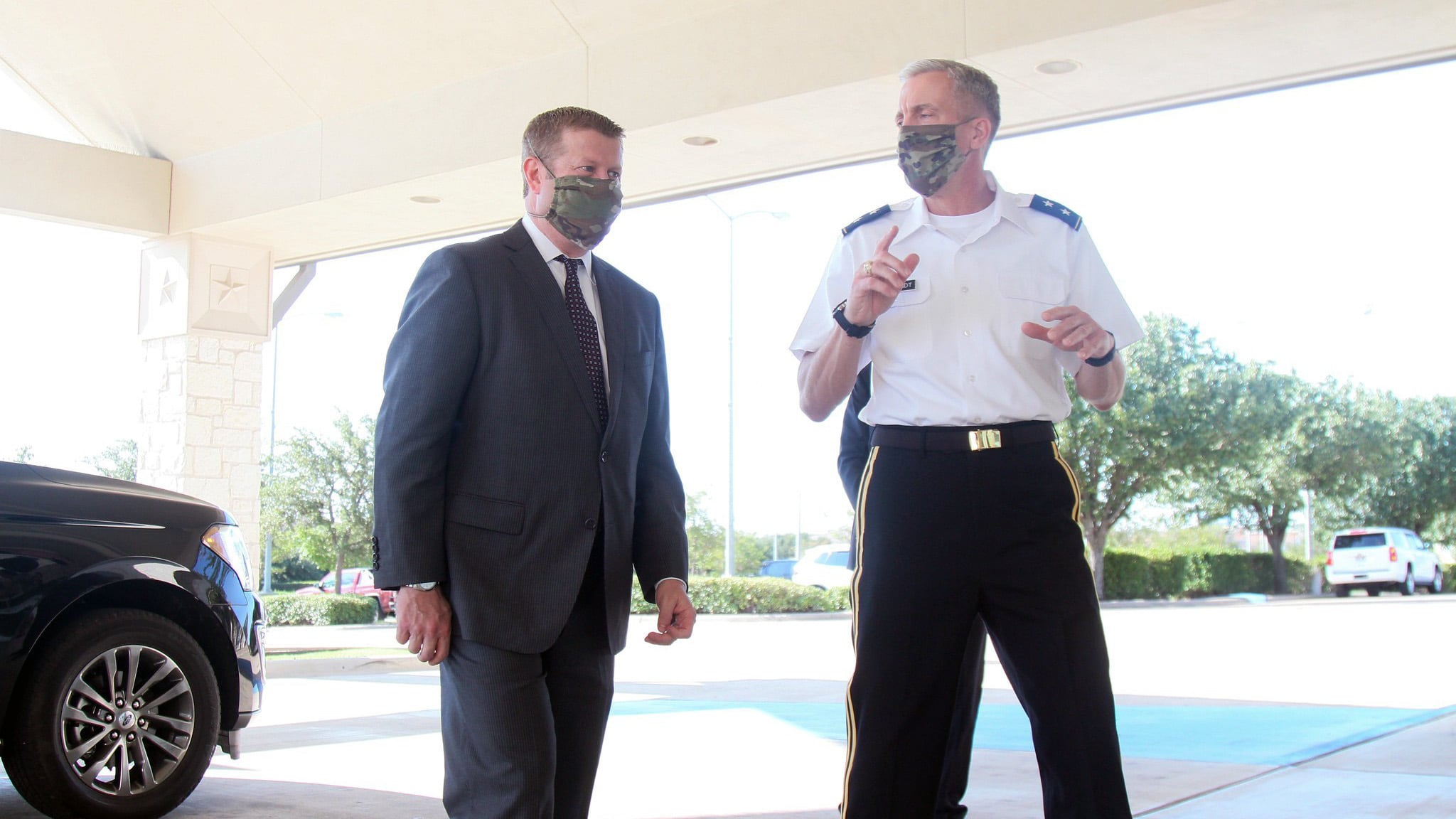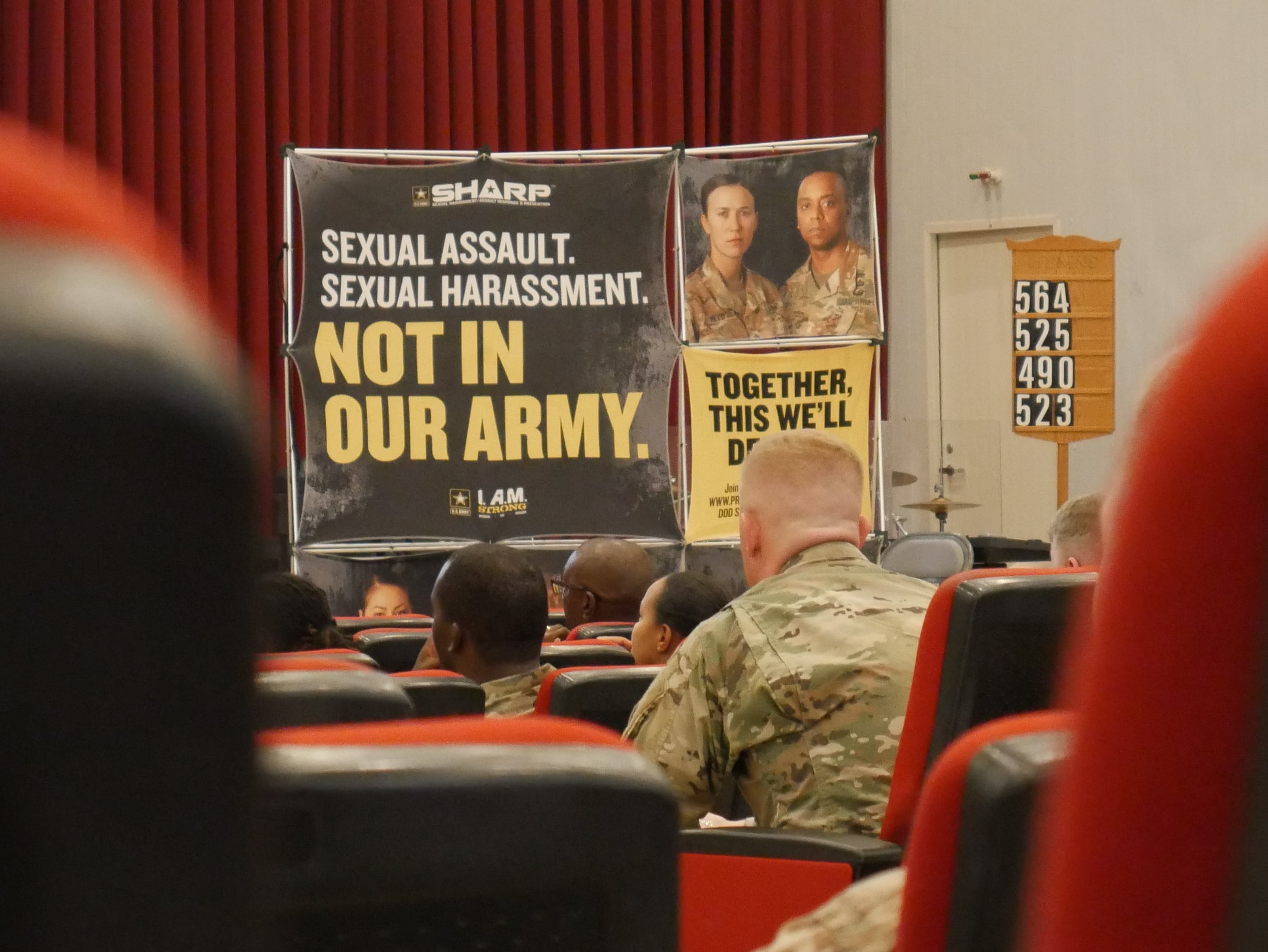This coming spring, sexual assault survivors at six Army installations will be able to access all of their victim services under one installation directorate as part of a new pilot program, the Army announced in a Wednesday afternoon press call.
The pilot “SHARP Fusion Directorates” are just the first domino to fall in what will become a comprehensive overhaul of the Army’s Sexual Harassment/Assault Response and Prevention program.
“It is intended to increase accountability, transparency and efficiency by coordinating all victim response elements, including victim advocates, medical care providers, law enforcement investigators and criminal prosecutors under a single directorate,” said Col. Erica Cameron, chair of the Army’s SHARP redesign committee. “By synchronizing — and in some cases, co-locating these support services, either physically or virtually — it will be easier for victims to get the help they need.”
Each pilot location will have a “fusion director” who directly reports to the installation commander, said Col. Kelly Webster, deputy director of the Army’s People First Task Force, which was formed in response to the Army’s failures at Fort Hood.
The one-year pilot will take place beginning in approximately March 2022, Cameron said, and sites will be located at:
- Aberdeen Proving Ground, Maryland
- Schofield Barracks, Hawaii
- Fort Bragg, North Carolina
- Fort Irwin, California
- Fort Riley, Kansas
- Fort Sill, Oklahoma
“These pilot locations were selected to represent a broad range of sizes and types of Army installations,” she added.
Army leaders involved in the design process explained that a key benefit of the fusion directorates will be their independence from a soldier’s immediate chain-of-command.
“Additionally, the fusion director will operate outside the victim’s immediate chain of command and outside the victim’s immediate footprint, offering them an additional reporting mechanism for reporting sexual assault or sexual harassment incidents,” Cameron told reporters.
Survivors of sexual assault do currently have a way to report outside their chain of command, such as garrison sexual assault response coordinators or the DoD Safe Helpline. But the Army thinks that adding and advertising a centralized reporting and continuing care solution will help.
“A soldier who may before have thought that he could only call somebody or talk to somebody within his brigade footprint, will now have an opportunity to go outside that footprint, someone that’s not within their brigade, and is assigned to the fusion directorate to provide that general support at the installation level,” said Cameron.
The idea was inspired partly by a pilot effort that took place at Joint Base Lewis-McChord, in Washington state, in 2015, officials said.
“There [were] a lot of great lessons that came out of that,” Cameron noted. “That pilot was not extended Army-wide due to…shifting priorities and limited resources at the time.”
Reserve component efforts
The Army is “still working” to figure out the best way to implement the concept for the Army National Guard and the Army Reserve, leaders said. The Guard isn’t participating in the pilot.
The Army Reserve’s 99th Readiness Division, headquartered at Fort Dix, New Jersey, will pilot a virtual fusion directorate concept that will launch next summer.
Officials are still working to determine how to make the virtual fusion directorate accessible to soldiers while balancing the need for digital security and privacy.
Many key Army websites are protected by Common Access Card certificate authentication, which requires Reserve and Guard soldiers to purchase card readers and download software if they wish to access CAC-enabled sites from home. This creates a significant barrier to accessing such sites for part-time troops.
Cameron said she was concerned “about locking information behind a CAC-enabled website,” but that “we’re still working the details on what type of system interface we need to use.”
“That’s still something that’s going to have to be worked out through the planning and development of the concept for the Guard and Reserve,” she said. “One of the things we’re considering is a QR code that can give victims easy access to resources.”
Why not the Guard?
A soldier with knowledge of SHARP reform told Army Times that the Guard was resistant to allowing a pilot program unless the Army was “willing to do 54 different pilots” in each state and territory that has its own Guard.
Cameron said, though, that the Guard “has been participating in the entire development of this new concept,” but complications related to duty status issues and funding “require them to adjust and amend the fusion concept for their specific circumstances.”
More to come?
Calls to reform SHARP are nothing new, but the problems were revealed as too catastrophic to ignore in the wake of Spc. Vanessa Guillén’s death and the subsequent report of the Fort Hood Independent Review Committee.
RELATED

The FHIRC report condemned the entire service’s SHARP program as “structurally flawed.” Then the Defense Department’s Independent Review Commission on Sexual Assault in the Military found significant structural issues with the program, as well.
One recommendation of the DoD IRC was for the Army to consider centralizing SHARP resources for survivors, and Army leaders said that was the impetus behind the fusion directorate initiative.
“The fusion directorate aligns with the IRC’s recommendations for improving victim care and support providing easy access to services,” said Col. Kelly Webster, deputy director of the Army People First Task Force. “This was an area that the IRC prioritized.”
The soldier familiar with SHARP redesign efforts, who spoke on background because they weren’t authorized to brief media in an official capacity, described the effort more bluntly.
“This was an initial knee jerk response to the [Fort Hood IRC] for victim care,” the soldier explained, describing the fusion directorate move as “very [much] common sense.”
Army leaders said the reforms won’t stop here.
“There will be [other reform initiatives] over time as we continue to revamp and reform our SHARP program,” Webster said.
Army Secretary Christine Wormuth announced in September that the service is standing up an office to handle independent prosecutorial decisions for sexual assault and harassment cases, though details on the plan remain elusive as the Army awaits Congress’ deliberations on military justice reform.
The soldier familiar with SHARP redesign said more reforms are on the way.
“There’s so much more work that there is to be done,” the soldier said. “[The fusion directorates are] the tip of the iceberg, and a small drop in the ocean of the SHARP redesign effort that is going on.”
Davis Winkie covers the Army for Military Times. He studied history at Vanderbilt and UNC-Chapel Hill, and served five years in the Army Guard. His investigations earned the Society of Professional Journalists' 2023 Sunshine Award and consecutive Military Reporters and Editors honors, among others. Davis was also a 2022 Livingston Awards finalist.




